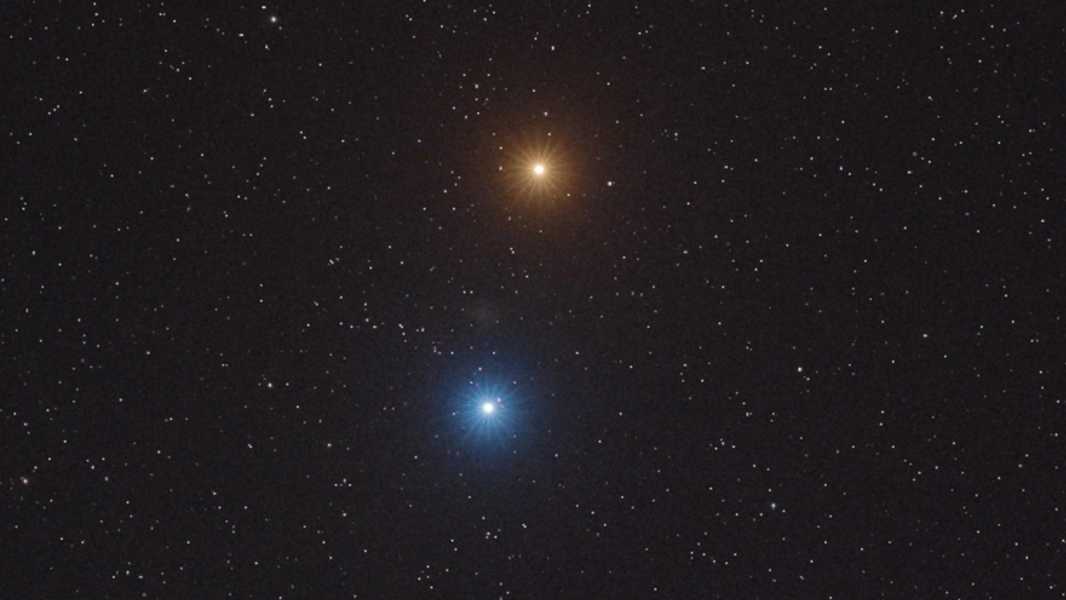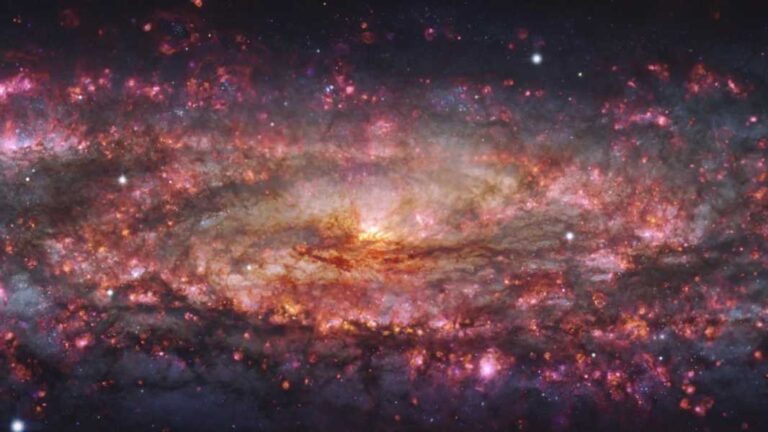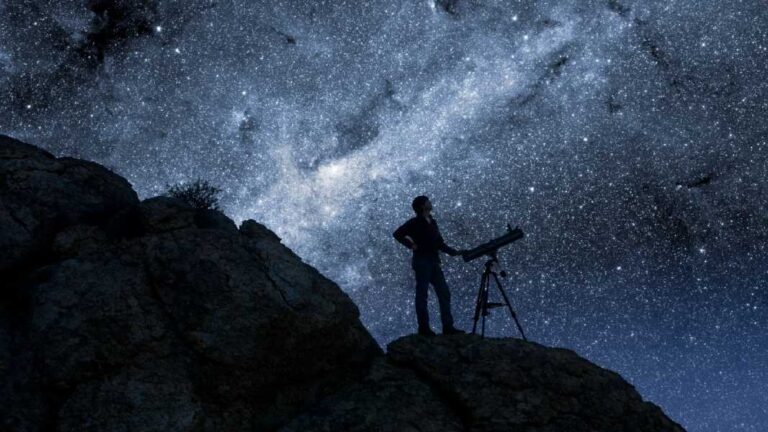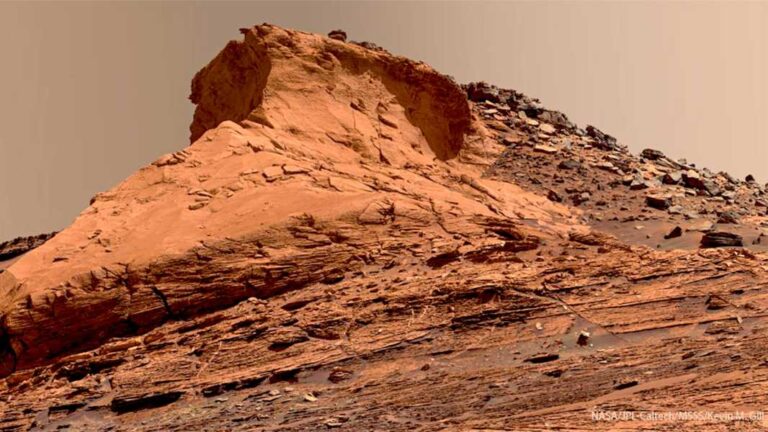
On June 16, the Virtual Telescope Project released a stunning image of Mars (top) and Regulus (bottom) glowing next to each other in the night sky. (Image courtesy of the Virtual Telescope Project)
In the new image, Mars shines as a red star in the night sky, next to the bluish “Heart of the Lion” star Regulus. Despite their marked differences, the two celestial objects currently look remarkably similar.
Regulus is the brightest star in the constellation Leo. The point of light comes from a system of four stars arranged in two pairs and is located about 79 light-years from Earth – about 2.8 million times farther from our planet than Mars. The system’s bluish hue comes from its most massive star, a blue subgiant that is about 4.5 times heavier than the Sun. It often appears close to, or is eclipsed by, the other planets in the Solar System and the Moon, because it is located close to the ecliptic – the plane in the night sky along which all the worlds in the Solar System orbit the Sun.
Mars and Regulus currently appear very close to each other. This conjunction peaked on June 17, when the pair were less than one degree apart, or about 1.5 times the diameter of the Moon in the night sky. The red planet is now shining very brightly at night due to its position relative to the Earth and the Sun, making it appear as a red star.
You may like
-

Lights on Mars! NASA rover captures visible auroras on the Red Planet for the first time
-

The best week for stargazing in May has begun. Here's what you can see.
Sourse: www.livescience.com





